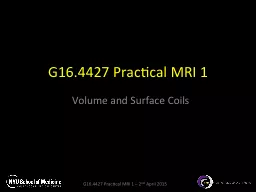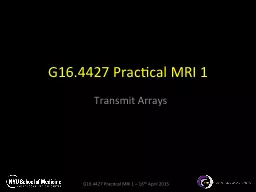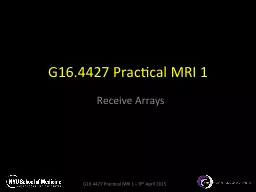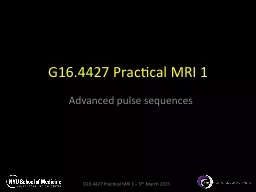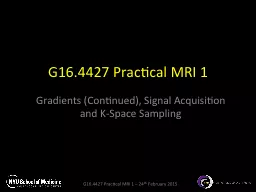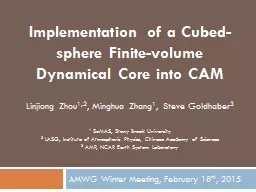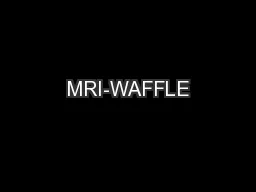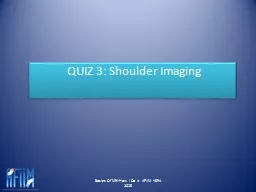PPT-G16.4427 Practical MRI 1
Author : sherrill-nordquist | Published Date : 2016-02-21
Volume and Surface Coils MR Coils An MR coil is an inductor capable of producing andor detecting a timevarying magnetic field It can be represented as an inductance
Presentation Embed Code
Download Presentation
Download Presentation The PPT/PDF document "G16.4427 Practical MRI 1" is the property of its rightful owner. Permission is granted to download and print the materials on this website for personal, non-commercial use only, and to display it on your personal computer provided you do not modify the materials and that you retain all copyright notices contained in the materials. By downloading content from our website, you accept the terms of this agreement.
G16.4427 Practical MRI 1: Transcript
Download Rules Of Document
"G16.4427 Practical MRI 1"The content belongs to its owner. You may download and print it for personal use, without modification, and keep all copyright notices. By downloading, you agree to these terms.
Related Documents

